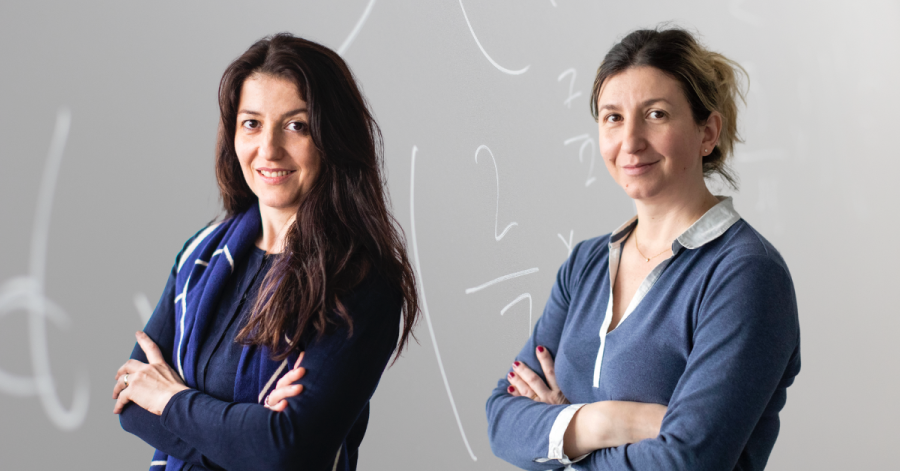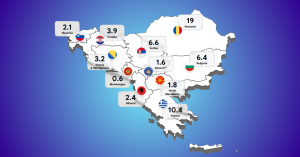In the realm of embedded systems, two researchers-turned-entrepreneurs are helping companies make sure their machines are safe and efficient with a solution based on a process called statistical timing analysis. Dr. Adriana Gogonel and Dr. Liliana Cucu-Grosjean, founders of StatInf, bring years of expertise from the prestigious Inria Paris research institute. They started Statinf following a request from industrial partners to launch a commercial version of the prototype they created at Inria Paris. Today, their research work is materialized through a commercial product, RocqStat, two patents, and various partnerships.
Founded in December 2019, just before the COVID-19 pandemic hit, StatInf has navigated the turbulence with the support of the French government. To date, they have received strategic financing in the form of €500,000, as part of an expected €1M seed funding round, led by WIT Angels Club, Arcadia Ventures, and Sharpstone Capital.
“Our main challenge is convincing embedded systems designers that an efficient use of multicore processors is possible without a heavy energy cost,” says Gogonel and Cucu-Grosjean.
Their focus industries include automotive, avionics, and space and defense, sectors that are highly conscious of time and energy budgets. They envision a future where their product could serve as a Swiss Army knife for embedded systems designers, helping them differentiate through energy savings.
Gogonel (CEO), has a PhD in statistics from the University Paris-Descartes, followed by a 6-year postdoctoral fellowship at Inria. Cucu-Grosjean (Scientific Leader) has a PhD in computer science from the University of Paris-Saclay and has co-authored more than 60 articles and several patents. She has transferred her contributions to a correct utilization of statistical approaches for the worst-case execution time estimation problem from Inria to StatInf.
In this interview, the two co-founders talk more about their journey, the product, and expansion plans.
The Recursive: What is one key reason you decided to start Statinf?
An important barrier associated with the introduction of multicore processors in designing efficient critical embedded systems (like airplanes or cars) is the main reason for the emergence of StatInf. As scientists, during the last ten years of research we have supported a general interest in using probabilities as possible foundations for increasing the confidence in such methods when dimensioning multicore processors. Longtime forbidden from critical embedded systems, multicore processors are today mandatory due to an increased complexity of programs.
The product that StatInf proposes is based on probabilities and, more precisely, it implements a statistical timing analysis. It answers multicore processors-related challenges, while our product goes beyond the market of critical embedded systems to the wider market of general embedded systems (like phones or robots).
In the simplest words, what is statistical timing analysis?
A statistical timing analysis is a mathematical method using past time behaviors to estimate what is a future time behavior of an embedded system. By time behavior we understand the time needed by the embedded system to execute the programs implementing its functionalities.
For instance, for an airplane the flying control functionality is controlled by programs that need to execute within a very precise time budget. The same stays true for programs implementing a phone application but the fitting within a given time budget is not mandatory as the user accepts a lower quality of service.
Which challenges are you addressing and in what industries?
Our main challenge is convincing embedded systems designers that an efficient use of multicore processors is possible without paying the cost of an increased important energy consumption. Our final target is the industrial IoT domain while avionics, automotive, space and defense are our first industries that we have addressed as they are familiar with time budget concerns.
Can you give as an example of a collaborative project where your solution is currently deployed?
Statinf is part of the FR Mach2 project, next to five major mobility players – Alstom, EasyMile, Equans, Keolis and Renault Group. Awarded as a winner of the France 2030 call for projects on “Automated road mobility, connected and zero-emission service infrastructures”, the Mach2 project has received support from the French Ministry of Ecological Transition and Territorial Cohesion as well as from Bpifrance.
The project is supported by a six members consortium which targets the launch of a new, zero-emission public transport service at Level 4 (without an on-board supervizor) of autonomous driving. It is bringing together French leaders in mobility, each of them contributing within complementary areas of expertise: Renault Group for the robotized electric minibus platform, EasyMile for the autonomous driving system, StatInf for the validation of critical software elements, Equans for the Computer Aided Dispatch and Automatic Vehicle Location (CAD/AVL) system, Alstom for the connected safety infrastructure and communication protocols, and Keolis for the operation and maintenance of these new public transport services.
One of your areas of focus is automotive. Help us paint a picture of the automotive industry by 2030. To which extent will it be autonomous?
In our opinion, the automotive industry is expected to heavily embed programs from suppliers to ease driving without reaching full autonomy, while there will be an important increased independence from thermal motors, gained thanks to programs. Put together, the 2030 car will execute an impressive number of programs but the designers will have a stronger constraint on weight of the car. This implies that they will face the problem aerospace actors solve by imposing strict time budgets.
What differentiates Statinf from competitors and substitutes?
A vision towards a wider use of time as a means to help embedded systems designers to differentiate from competitors by the energy savings brought into their products. Moreover, we believe that embedded systems designers will increasingly lose understanding of lower levels of development requiring development tools to be like a swiss knife. This is the ambition we have for our product, RocqStat.
What is the company’s traction so far?
StatInf’s first customers also played the role of product testers. We started with proof of concepts for Airbus Avionics and MBDA, followed by a standard license for Liebherr and evaluation licenses for Thales Avionics, CNES, Thales Alenia Space, Airbus Defence and Space. All these customers are part of the aerospace and defense sector in France. Our product is now ready for use by users in this area who use trace probes to extract information about programs running on multicore processors.
How did you finance the company?
During the last four years since StatInf has been created, the financing part has gone through the classic path of French start-ups. Very well supported, first, by the incubation department of Inria (now known as Inria Startup Studio), then by the Agoranov incubator and the Wilco accelerator then Starburst, we benefited at each stage from a part of funding from these entities , and always under their advice, state subsidies specific to deep tech technologies like ours. At the same time, collaborative projects and commercial traction have been established and have contributed to the financing of our R&D work and to the development of the product and commercial development.
With the ambition to cover several different markets, we need to enlarge the team, this is the reason why fundraising is underway. StatInf has already raised €500,000 in seed funding, reaching the halfway mark in their expected €1M funding round. The funding round was led by WIT Angels Club, Arcadia Ventures and Sharpstone Capital and benefited from the participation of BPI. This significant investment will support StatInf’s mission to empower software engineers to build safer and more efficient embedded software programs for security-critical industries such as avionics, automotive, drones, and aerospace.
What has been a major roadblock on the way and how did you overcome it?
There has been, of course, the COVID-19 crisis as we have created StatInf in December 2019, but the support of the French government has helped companies like ours to delay the effect of this crisis until the large actors went back to activity. One positive side effect has been that society has become more concerned about values and the safety and the security of embedded systems becomes important, again.
What’s next for Statinf?
Short-term, we address the European Aerospace and Defense market. In the medium term, StatInf’s product, RocqStat will evolve to also respond to the problems of automotive designers and in parallel we will cover the American market and the Asian automotive aerospace market. Long-term, StatInf will address the entire IIOT market as support for efficient software development.








